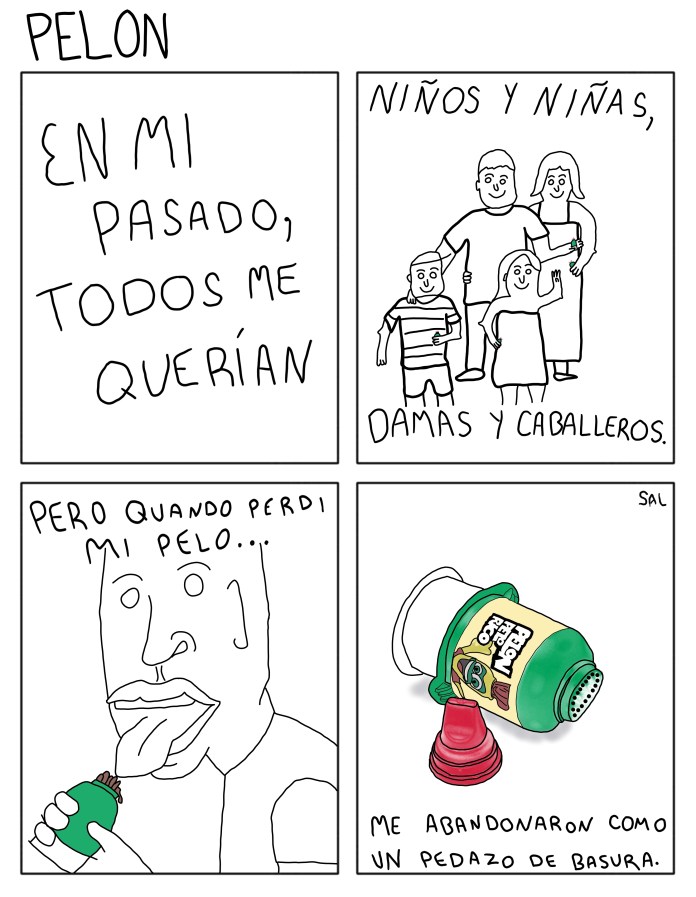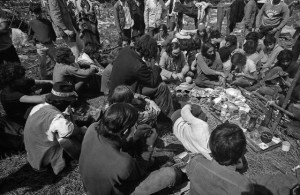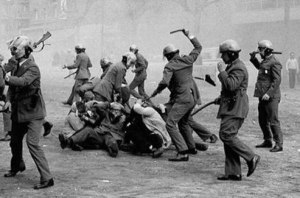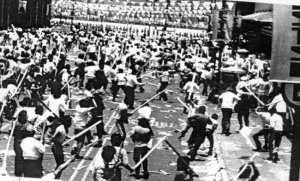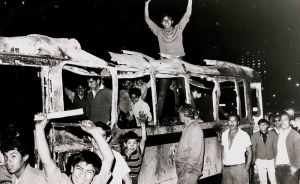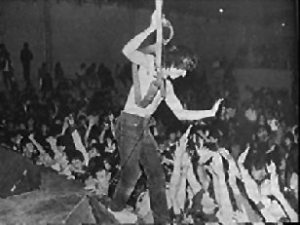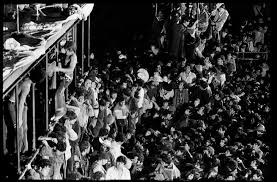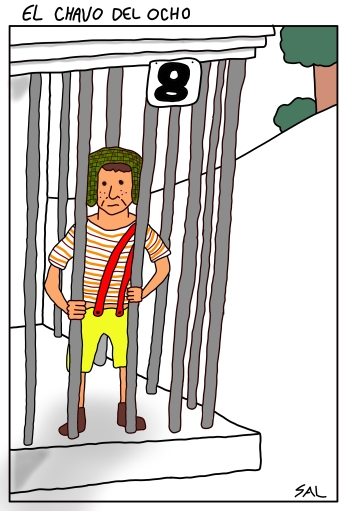At the dawn of the last century, Detroit began to experience a prolific boom in industry. Working-class people from across the country and beyond were drawn to the opportunity for stable, well-paying jobs on the assembly lines at the Ford, General Motors, and Chrysler facilities. Throughout the fifties, however, the auto industry began to leave Detroit – plants shut down and many workers were forced out of their jobs. Urban decay began to take ahold of the city, leaving abandoned facilities and vandalized monuments in its wake. As the city shifted into decline, small communities of immigrants which had settled there throughout the 1900s began to take over the now diminished neighborhoods throughout Detroit. One such district is the vibrant Latin-American neighborhood Mexicantown.

One of the many amazing portraits which can be seen throughout Detroit’s Mexicantown.
First known as “La Bagley”, Mexicantown began to emerge as an enclave for Latinos in the early 1920s. After a period of civil unrest and socioeconomic chaos brought forth by the Revolution of 1910, Mexicans felt compelled to escape the lingering turmoil in their home country. Detroit, with its well-paying assembly-line jobs for people with only a basic skillset, seemed like a promising alternative to the disorder in Mexico. Additionally, by immigrating as far north as Michigan, Mexicans avoided the overt and often violent discrimination of the American Southwest. With the establishment of an effective and US-connected railroad system, Mexicans began to use trains to flock to El Norte (the North).

A railroad station located in Queretaro, a city in the heart of Mexico.
In Detroit, they joined the swath of Polish, Italian, Jewish, German, and Arab immigrants who all gathered there for the same reason – the promise of stable, well-paying jobs in Detroit’s expansive industrial landscape. In the new world, these immigrants faced the challenges of an extremely different climate, a new language, and an overall faster pace of life. At first, not speaking English was a great equalizer among the diverse community which had come to settle in Detroit. This changed gradually as the young children of these immigrants began attending school and assimilating into their new culture. Some changes took longer, though, and the demand for bits of their home culture remained. A commercial district began to form around the growing needs of the Latin-American community and soon, La Bagley emerged.
By the early 1930s, a few Mexican restaurants had opened on Bagley Street in the neighborhood known as Corktown, just to the west of downtown Detroit. Throughout the decade, Mexican businesses began to emerge throughout the western neighborhoods of the city so that by the mid-1930s there were around 35 Mexican owned businesses on Bagley Street and Michigan Avenue. By the 1940s, tortilla factories, such as La Michoacana and La Jalisciense (still in operation to this day), opened in Detroit. Today, Mexicantown is home to over 1000 Latino-owned businesses.
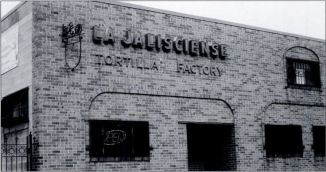
La Jalisciense tortilla factory was one of the first in Detroit and is still in operation to this day.

The Honeybee Market was one of the first Mexican-owned grocery stores in Detroit and helped provide the Latin community with ingredients for traditional foods.
Though the first few decades of Mexicantown were a prosperous time for Detroit’s Latin community, all this began to change in the latter part of the century. In the 1960s, plans to develop a new interstate eventually led to the bisecting of the Mexican district. Entire neighborhoods were bulldozed to accommodate the path of I-75 and many Mexican locals sold their businesses and properties to the Michigan Department of Transportation in the ensuing construction. More ruin was to come in the 1970s when General Motors closed three of their major auto plants in southwest Detroit, substantially reducing the amount of well-paying blue-collar jobs. Though these events took their toll on many of the immigrant communities, Mexicantown and many others continued to survive throughout the Motor City.
In the years since the economic and social turmoil of the 70s and 80s, the once small Mexicantown is now one of the most thriving communities in all of Detroit. A sprawling oasis of Latin culture, the neighborhood is home to hundreds of Mexican-owned shops, bakeries, taquerias, and grocery stores – each with their own vibrantly-colored architecture and hand painted signs reminiscent of town squares throughout Mexico. Despite the toxic political climate for Latinos in the US, this neck of Detroit spells a renewed faith in cultural acceptance and a reinvigoration of the once prolific American dream for immigrants. There is hope in the story of Mexicantown and communities like it for a more prosperous, progressive future.






